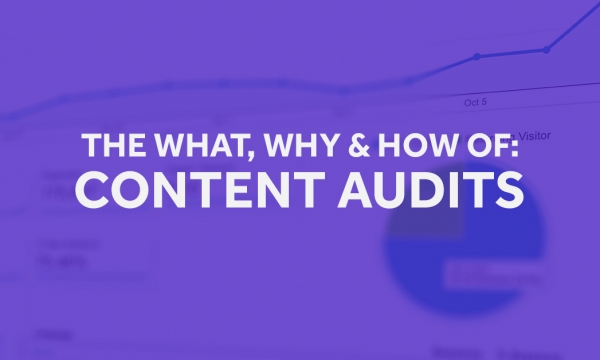
You have as little as two-tenths of a second to make a positive impression on your online visitors. In order to ensure sure that you’re making the right one, your content needs to not only connect with your customers, but also resonate powerfully enough to entice them back in the future.
Your content is your front-of-house, your shop window and your key salesperson – so what you do with it can make or break your brand’s chances of success. If you aren’t succeeding into engaging those visitors, it could be because you’re falling into one of these surprisingly common pitfalls.
You’re not talking to your audience

If you don’t know your target market inside out, that disconnect will manifest itself in your content and could be detrimental to your customer relations.
Take care to craft your content according to your audience and the topics you know they’re interested in. This way you’re providing relevant, useful information that will resonate with them and, as a result, will be the content they were actually looking for.
Your content isn’t evergreen

Make sure your content offering doesn’t date – it should remain relevant for weeks, months and even years following its publication. Always be sure you’re giving it the best shot of driving traffic, leads and social shares. Create content that is timeless, and while it will still need maintenance and updating so it stays current for as long as possible, you’re giving it a much better chance of working harder for you and remaining valuable to your readers.
You’re selling too aggressively

Selling is important, but it’s also important that your content educates, entertains and informs. This balance is what will set your content apart from overt advertising material.
Whilst there are clearly going to be commercial objective to some of your content, you also need to address the very purpose of that user’s query – which may or may not be a commercial query depending where that user is in the buying process. Tailor your content offering according to what your customers want to know, not what you want to tell them, and any calls to action should appear at the bottom of an article, and not be so obviously prioritised high up in the piece.
You’re not prioritising user experience

User experience has an extremely important role to play in the success of your content. UX elements such as mobile accessibility, page speed, user navigation and time on site are now key ranking factors in Google search, so it is something that you need to be mindful of when creating and distributing your content.
Make sure that the content that you’re putting out there is delivering the sort of experience that your readers expect; that they can find what they are looking for and that they can access it on the device that they are using. If most of your traffic comes from mobile devices, is a 400-word piece or content really going to deliver that optimum user experience?
You’re failing to learn from analytics

Understanding what works and what doesn’t is incredibly useful for shaping your content strategy and editorial calendar.
Do you know which piece of content has brought in the most traffic and conversions? Where are your most frequent visitors located? How long are they staying on your site? Could time on page and bounce rate be improved? If your content is under-performing according to all these variables, it’s time to make some changes.
Use your analytics software to really get insight into what has worked, and what hasn’t. That will help you to direct your resources and investment into content that works, and avoid producing content that hasn’t resonated with your audiences.
As long as you know the right questions to ask, you can properly evaluate your content and improve future efforts.
You’re not utilising other channels

Don’t limit your content to the single platform of your website. Promotion is key when it comes to content marketing, and it can often prove to be a damaging oversight if you fail to recognise this.
Think about how you’ll promote your content from the early stages of crafting it. How easy will it be to reach your content from the homepage? Is there scope for outreach and PR? Can you shout about a useful infographic or a thought leadership article on social to gain exposure? Perhaps you can use influencers, the industry experts, to your advantage? Either way, with the internet brimming with content waiting to be discovered, ensure yours is pushed to the fore and finds its audience by doing everything you can to promote it.
It’s not easy to create great content – it takes careful planning right from the outset in terms of your objectives and how you see it reaching your audience. If you’re mapping out your content correctly and taking into account your readers’ habits and actions, you’re well on the way to creating relevant, high-quality content that should build trust with your clients and improve your brand positioning.




